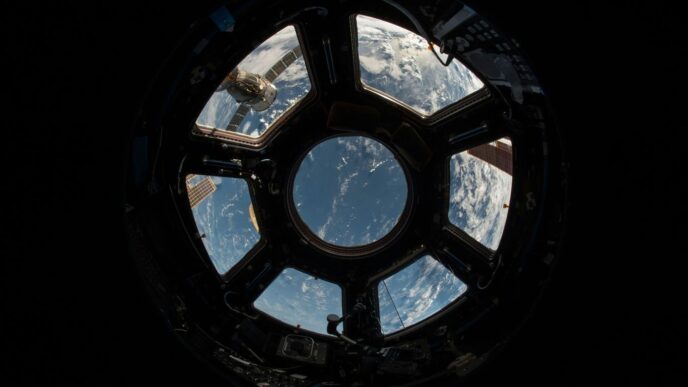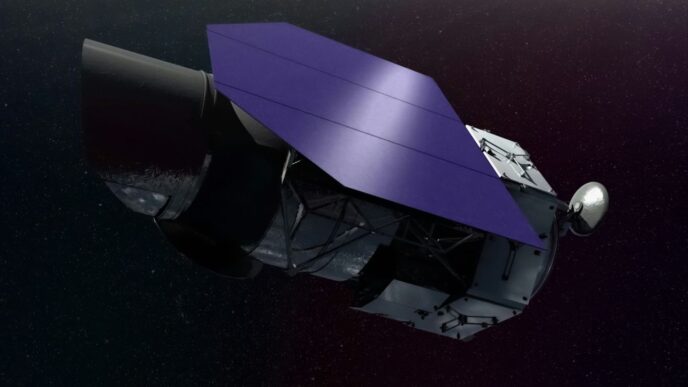Understanding the FAA Fines Against SpaceX
So, the FAA dropped some fines on SpaceX recently, and it’s got people talking. It’s not every day you hear about a space company getting dinged by regulators, especially one as high-profile as SpaceX. This whole situation really makes you stop and think about how spaceflight is regulated these days.
Examining the Specific Launch Violations
What exactly did SpaceX do wrong? Well, the FAA pointed to a few key areas. It seems like some of the issues popped up during testing and launch preparations. Think about it like this: when you’re building a rocket, there are a ton of moving parts and safety checks. Missing even one can cause problems.
- Documentation Gaps: Sometimes, the paperwork just wasn’t quite right. This could mean not having all the required safety reports filed or having incomplete records of tests performed. It sounds minor, but for the FAA, it’s all about traceability and making sure everything is accounted for.
- Testing Procedures: There were also questions about whether certain tests were conducted exactly as planned or if safety protocols during testing were followed to the letter. Rockets are complex machines, and how you test them matters a lot.
- Environmental Reviews: In some cases, it looks like there might have been issues with making sure all the environmental impact assessments were fully completed before certain activities. Launch sites can affect local ecosystems, so this is a big deal.
The FAA’s main concern is always public safety and making sure that space launches don’t pose undue risks.
The Role of FAA Oversight in Spaceflight
The Federal Aviation Administration, or FAA, is the government body that’s supposed to keep an eye on all commercial space launches in the U.S. They’re the ones who issue launch licenses, and they have to make sure that companies like SpaceX are playing by the rules. It’s a pretty big job, considering how complicated and potentially dangerous spaceflight is.
Their role isn’t just about handing out permits, though. They’re supposed to be actively involved in reviewing safety plans, monitoring launches, and investigating any incidents that happen. It’s a balancing act – they need to allow companies to innovate and push boundaries, but they also have to protect people on the ground and in the air.
Impact of Fines on SpaceX Operations
So, what does getting fined actually mean for SpaceX? On one hand, the amounts might seem small compared to the company’s overall budget. But these fines aren’t just about the money. They can signal bigger issues.
- Operational Adjustments: SpaceX might have to change how they do things. This could mean more rigorous internal reviews, extra training for staff, or even slowing down their launch cadence to ensure everything is perfect.
- Reputational Hit: While SpaceX has a strong reputation, repeated regulatory issues can start to make people wonder if they’re cutting corners. This could affect public trust and potentially investor confidence.
- Future Licensing: Future launch licenses could come with even stricter conditions. The FAA might be watching SpaceX more closely than ever, which could add time and complexity to their launch plans.
SpaceX’s Starship Program and Regulatory Hurdles

Starship Development and Testing Challenges
SpaceX’s Starship program is incredibly ambitious, aiming for a fully reusable super heavy-lift launch vehicle. But let’s be real, building something this complex from scratch is tough. We’ve seen a lot of test flights, and while some have been pretty impressive, others have shown us just how much work is still needed. The goal is to eventually launch, land, and reuse both the Super Heavy booster and the Starship upper stage. This is a huge leap from current rocket technology. The biggest hurdle right now is proving the reliability and reusability of the entire system, especially the Starship upper stage during re-entry. We’ve seen progress, like successful booster landings and improved re-entry performance in recent tests, but there are still issues. Things like heat shield integrity and the durability of control surfaces during the fiery descent need more work. It’s a constant cycle of build, test, learn, and repeat.
FAA Licensing Requirements for Orbital Flights
Getting Starship ready for orbital flights means a lot more than just building a rocket. The Federal Aviation Administration (FAA) has a big role to play here, and their licensing process is pretty detailed. They need to make sure that launches are safe for people on the ground and for other aircraft and spacecraft in the air. For Starship to fly beyond suborbital tests, SpaceX needs a full launch license from the FAA. This involves a whole lot of paperwork and safety reviews.
Here’s a general idea of what’s involved:
- Environmental Reviews: The FAA looks at the potential impact of launches on the environment, including noise, emissions, and any effects on wildlife.
- Safety Analysis: This is a big one. SpaceX has to show the FAA that they’ve thought through all the potential failure modes and have plans in place to mitigate risks.
- Launch Site Operations: The FAA reviews the procedures and safety measures at the launch site itself.
- Vehicle Design and Performance: While the FAA doesn’t approve the rocket’s design in the same way an aerospace engineer would, they do need to be satisfied that the vehicle can perform as intended and that its systems are reliable enough for the mission profile.
This licensing process can take a long time, and it’s a significant part of the regulatory hurdles SpaceX faces for Starship’s orbital ambitions.
Addressing Safety Concerns in Rapid Development
SpaceX is known for moving fast, which is great for innovation, but it can also create challenges when it comes to safety regulations. The FAA’s job is to balance SpaceX’s drive for rapid development with the need to protect the public. When a company is testing new technologies and pushing boundaries, there’s always a higher risk. The FAA has to be extra diligent in these situations.
Some key areas of focus include:
- Failure Analysis: Understanding why previous tests didn’t go perfectly and implementing fixes.
- Risk Assessment: Continuously evaluating the risks associated with each new test flight and operational phase.
- Public Safety Measures: Ensuring that any potential debris or anomalies from a launch are managed safely, especially given Starship’s size and power.
It’s a delicate dance. SpaceX wants to iterate quickly, and the FAA needs to ensure that safety isn’t compromised in the process. This often leads to discussions and sometimes disagreements about what constitutes acceptable risk and what safety measures are sufficient.
The Broader Implications of FAA Fines for SpaceX
These FAA fines aren’t just about a few missed deadlines or paperwork issues; they ripple out and affect a lot more than just SpaceX’s launch schedule. Think about it – when a company like SpaceX, which is really pushing the boundaries, runs into regulatory trouble, it sends signals to a lot of different groups.
Competition and Market Dynamics in the Space Industry
First off, there’s the whole competitive landscape. SpaceX has, for a long time, been the company that could get things done faster and cheaper than pretty much anyone else. When they face fines, it can create openings, or at least the perception of openings, for other companies. This might encourage NASA or other government agencies to look more closely at competitors, even if those competitors aren’t quite as far along. It’s like a race where one runner stumbles; others might see a chance to catch up. This regulatory scrutiny could potentially slow down SpaceX’s dominance and give newer players a bit more breathing room to develop their own capabilities. It’s a delicate balance, trying to keep innovation moving while also making sure everyone plays by the rules.
Government Contracts and Regulatory Compliance
Then there are the government contracts, which are a huge part of SpaceX’s business. The FAA’s role is to make sure that space launches are safe, not just for the people involved but for everyone on the ground and in the air. When SpaceX gets fined, it raises questions about their ability to meet the stringent requirements that come with these big government deals. It could lead to more oversight, more paperwork, and potentially even delays in getting new contracts approved. For agencies like NASA, they need to be confident that their partners are reliable and compliant. A history of fines, even for what might seem like minor violations, can make them pause and reconsider. It’s not just about the money; it’s about trust and the successful execution of complex, high-stakes missions.
Public Perception and Investor Confidence
Finally, let’s talk about how the public and investors see all this. SpaceX, and Elon Musk himself, have built a massive following. People are excited about the future of space exploration, and SpaceX is often seen as the company leading the charge. However, regulatory issues and fines can chip away at that image. Investors, in particular, look for stability and a clear path forward. Repeated run-ins with regulators might make them nervous, potentially affecting SpaceX’s ability to raise capital for its ambitious projects like Starship. It’s a tough tightrope to walk: being a disruptive innovator while also being a responsible, rule-following entity. The perception of risk can quickly change, and that has real financial consequences.
Navigating the Complexities of Space Launch Regulations
Balancing Innovation with Public Safety
Look, getting rockets into space isn’t like ordering pizza. There are a lot of moving parts, and when things go wrong, they can go really wrong. The Federal Aviation Administration (FAA) has the tough job of making sure companies like SpaceX don’t just blast off without thinking about what could happen if something breaks. It’s a constant tug-of-war, really. On one hand, you’ve got companies pushing the limits, trying to do things faster and cheaper. That’s how we get cool stuff like Starship. But on the other hand, you have to make sure that innovation doesn’t put people on the ground or other spacecraft in danger. It’s not just about the rocket itself, but also about the debris, the flight paths, and what happens if there’s a failure. The FAA has to set rules that allow for progress but also keep everyone safe. It’s a tricky balance, and sometimes, like with these fines, it looks like they’re not quite in sync.
The Evolving Landscape of Space Law
Space law is still pretty new, and it’s changing fast. Think about it: just a few decades ago, only a couple of countries were really doing much in space. Now, we’ve got private companies launching rockets all the time. The old rules just don’t quite fit anymore. We’re seeing new questions pop up all the time. For example, who’s responsible if a piece of space junk from one company hits another company’s satellite? Or how do we handle traffic management for all the new satellites being launched? It’s like trying to write the rules for a game while people are already playing it at lightning speed. The FAA is trying to keep up, but it’s a huge challenge. They’re looking at things like:
- Launch site safety zones: Making sure the area around a launch is clear.
- Vehicle reliability standards: Setting benchmarks for how safe the rockets need to be.
- Debris mitigation: Planning for what happens to rocket parts after they’ve done their job.
- Environmental impact assessments: Looking at how launches affect the air and surrounding areas.
It’s a lot to consider, and it’s not something that can be figured out overnight. The regulations need to be flexible enough to handle new technologies but firm enough to prevent disasters.
International Perspectives on Launch Regulations
Space isn’t just an American thing, obviously. Other countries have their own space programs and their own ways of looking at regulations. Some countries might have stricter rules, while others might be more relaxed to encourage their own space industries. This can get complicated when companies operate globally or when launches involve international cooperation. For instance, if a European company is launching a satellite on a SpaceX rocket from the US, whose rules apply? It’s a bit of a patchwork quilt right now. The Outer Space Treaty from way back in 1967 is still a big deal, but it’s pretty general. It talks about peaceful uses of space and not claiming territory, but it doesn’t get into the nitty-gritty of rocket engine testing or launch safety protocols. So, while the FAA is focused on US launches, there’s a bigger international conversation happening about how to create a more unified approach to space traffic and safety. It’s something that will only become more important as more countries and companies get involved in space activities.
SpaceX’s Response to Regulatory Scrutiny
When the FAA hands out fines, especially for something as serious as launch violations, companies tend to react. SpaceX is no different. Elon Musk, the guy in charge, has definitely made his thoughts known on these kinds of situations. He often talks about how important it is to move fast and innovate, and sometimes, that means pushing boundaries.
Elon Musk’s Public Statements on FAA Fines
Musk’s take on regulatory issues, including these fines, usually centers on the idea that strict rules can slow down progress. He’s been quoted saying things that suggest he feels the FAA’s approach can be overly cautious, potentially hindering the rapid development needed for ambitious projects like Starship. It’s like he’s saying, "We need to get to Mars, and these rules are making it harder." He often points out that developing new technology is inherently risky, and that expecting perfect adherence to every single regulation from day one might be unrealistic for cutting-edge stuff.
SpaceX’s Strategies for Compliance
So, what does SpaceX actually do when they get hit with a fine or a warning? Well, it’s not just about making statements. They have to show they’re taking action. This usually involves a few key things:
- Reviewing Procedures: The company likely goes back and looks at exactly what happened during the launch or test that led to the violation. They’ll try to pinpoint the exact step or decision that went wrong.
- Implementing Corrective Actions: Based on the review, they’ll put new procedures in place or update existing ones. This could mean better training for staff, changes to how they check equipment, or even redesigning certain parts of the launch process.
- Working with the FAA: It’s not a one-way street. SpaceX has to communicate with the FAA, explaining what they’ve found and what they’re doing about it. This back-and-forth is pretty standard in these situations.
The Future of SpaceX’s Launch Cadence
All of this regulatory back-and-forth definitely has an impact on how often SpaceX can launch. When there are investigations or corrective actions to be taken, it can put a pause on things. The goal is always to get back to a high launch cadence, but it has to be done safely and in line with what the regulators are looking for. It’s a balancing act, for sure. They want to launch as much as possible, but they also need to satisfy the FAA’s requirements to keep flying. This means that sometimes, a planned launch might get pushed back while they sort out any outstanding issues. It’s a constant negotiation between speed and safety.
Wrapping It Up
So, what’s the takeaway from all these FAA fines and launch hiccups? It’s clear that pushing the boundaries of space exploration isn’t always a smooth ride. SpaceX, despite its rapid progress, is facing some real challenges with regulations and sticking to schedules. Whether these fines are a simple administrative issue or something more, they highlight the complex dance between ambitious private companies and the government bodies overseeing them. It’s a reminder that even with groundbreaking technology, the path to the stars is paved with paperwork, safety checks, and sometimes, a few bumps along the way. We’ll have to keep watching to see how SpaceX navigates these hurdles and what it means for the future of space travel.














